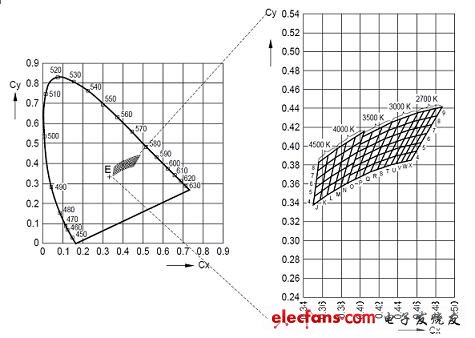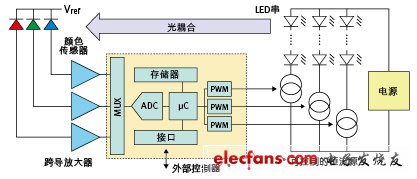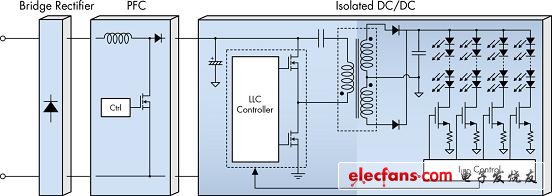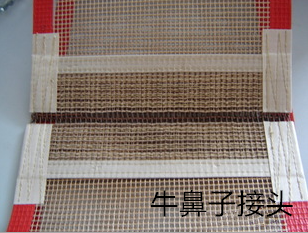If you let consumers describe the perfect light source characteristics, then you may hear a variety of desirable characteristics in their descriptions that require the lowest energy, adjustable light output and color, and long usage time. The minimum input energy refers to the efficient conversion of the input power to the lumen output, which is called efficacy; the adjustment of the light output is related to the dimming of the reduced brightness, or the color adjustment of the illumination device can be increased to simulate the daytime relative night condition; Adjusting the bias current flowing through the LED maintains the light output over a long lifetime.
Incandescent lamps have low energy efficiency and short service life; sodium lamps offer few color choices and short lifespans; fluorescent lamps have fewer options for dimming and have a shorter life. High-brightness LEDs claim to have good energy efficiency, long life, easy color selection and dimming control, and no ultraviolet (UV) rays. These claimed advantages have now been realized thanks to the intelligent design of the control unit or the LED drive electronics. Intelligent LED drivers can be adjusted for brightness decay over the life of the device, providing drive characteristics to adjust color and replacing LED binning for desired color and brightness: by using spectral tuning for different LEDs in the system The color and brightness required.
Spectral tuning comparison sorting
Spectral tuning mixes the spectral energy distribution of several LEDs, such as properly mixing red, green, and blue LEDs to produce white light. This RGB combination is also used to produce light of almost all colors. If the LED driver is not designed to regulate a different set of LEDs, the designer must choose from the sorted LEDs to produce a particular color. Sorting is the process by which manufacturers classify LEDs based on luminous lumens and colors. The example in Figure 1 shows a set of industry-standard LED "classification criteria."

Figure 1: LED classification criteria on the chromaticity diagram.
The classification is displayed by the rectangular area plotted on the chromaticity diagram. A group of LEDs contained in the same class will be similar in color and brightness characteristics. However, in large office or factory environments that contain many lighting fixtures, different classes may still result in uneven light color, which is evident in a large set of lighting fixtures. The sorted LED design does not provide a way to change the color of the lighting device; a set of LEDs of different colors use feedback to tune the spectral characteristics of the different LEDs in the system, enabling the compensation lighting system to be created in the office environment, thereby making the entire space The light is even. Spectral tuning can also compensate for other effects, such as natural light on the side of the room facing the window or corridor lighting that reflects into the room.
Another effect of LEDs is color shift, which is a change in the forward current of the LED. Figure 2 shows a plot of a set of industry LED colors as a function of forward current.

Figure 2: LED light units sorted by application.
LED drivers can be designed with tight constant current (CC) output tolerances, however, tightening CC tolerances will increase the cost of LED drivers. Since the forward current passes through a set of LEDs, a lower cost solution is for the designer to use a feedback system to adjust the LED color cast and compensate for color variations through feedback.
Sorting LEDs often has an impact on manufacturing, resulting in increased LED procurement costs. Because the LED sorting settings are specific, some LED drivers may still not be able to match the forward bias current settings of many classified LED applications. In addition, temperature effects and life degradation effects can cause changes in the color of the lighting device.
Application of feedback in spectral tuning
A lighting device that automatically adjusts color and brightness will be presented below to illustrate a feedback control scheme that can counteract the effects of system variations. Color sensors and microcontrollers are used to process the sensor inputs. For example, color sensors use photodiodes with non-organic three-way color filters to provide excellent stability and very low drift in temperature and aging variations, and color filters can be designed to implement spectrally sensitive curves for the human eye ( CIE1931).
The schematic diagram of the closed loop spectrally tuned source is shown in Figure 3.

Figure 3: Spectral tuning source.
The control loop uses a microcontroller as shown. The control loop measures the brightness and color through the sensor and uses the PWM signal to regulate the current in the LED string. Using a PWM input signal, the FAN7346 is capable of controlling the current in a single LED string. The power supply can be a power factor correcTIon preamplifier followed by an LLC DC/DC subroutine to power multiple LED strings, as shown in Figure 4. The power supply can also be an existing design that uses the FAN7346 to control feedback to the power supply. An alternative design can be made up of three power converters (30W/10W/10W), each controlling each set of LED strings, using white, green and amber light to create a white light-based tuning system, or using the same power supply Three strings of lights "mix" the three LED strings of red, green and blue for a wider range of color tuning. The LED color does not need to be sorted; a low cost LED with the performance required for lighting applications can be selected.

Figure 4: Power supply for spectrally tuned light sources.
Bull nose is a common connecting way of Conveyor Belt, which is named for its shape.
The joint mesh is made of Kevlar coated with Teflon dispersion, whose technical is similar to PTFE open Mesh Conveyor Belt.
Compared to PTFE fabric conveyor belt, bull nose is much more suitable for open mesh conveyor belt, and easy to install and to repairing. In addition, the price is more competitive than alligator joint. Besides, the conveyor belt with bull nose can apply in micro wave situation.

PTFE Conveyor Belts With Bullnose
Industrial Conveyor Belts,Conveyor Belt With Bullnose,Mesh Conveyor Belt With Bullnose,PTFE Conveyor Belts With Bullnose
TAIZHOU YAXING PLASTIC INDUSTRY CO., LTD , https://www.yaxingptfe.com